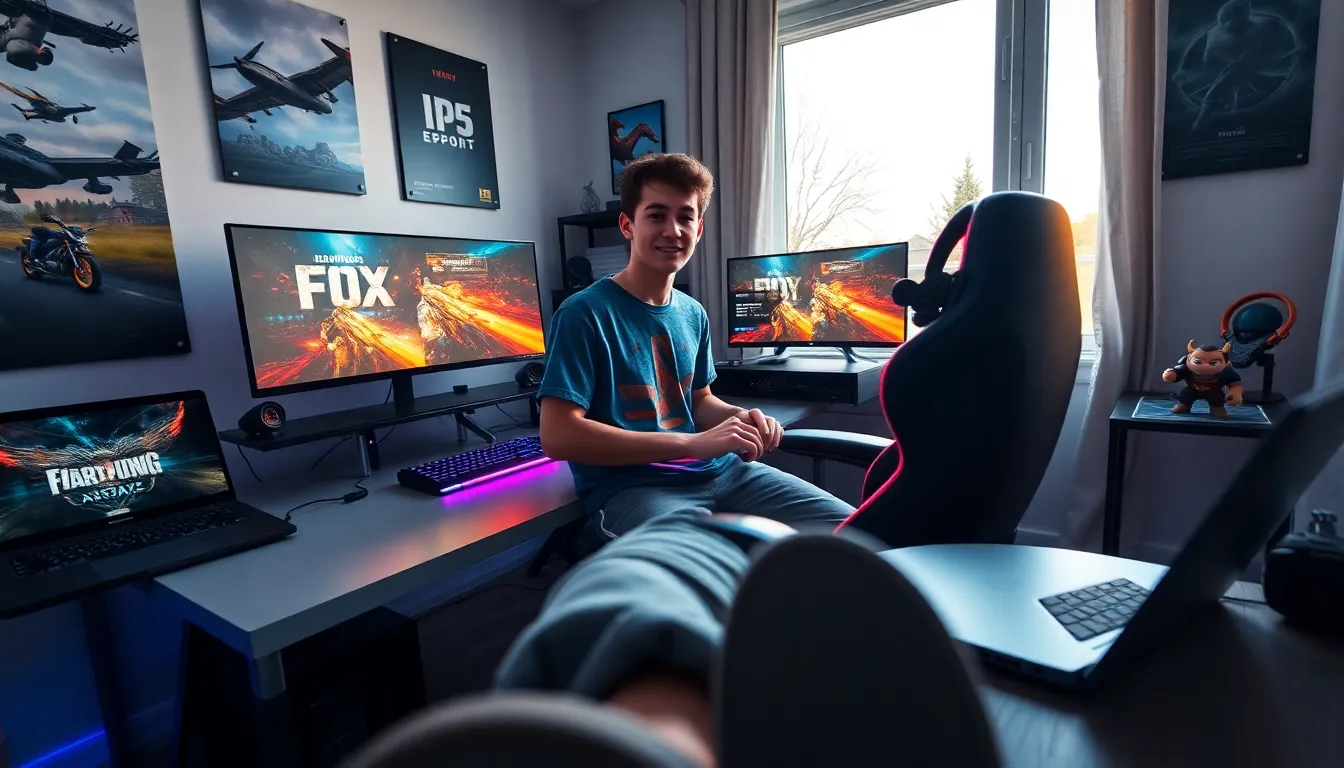In a world where screens are practically glued to our faces, setting screen limits has become more crucial than ever. Whether it’s binge-watching the latest series or scrolling through social media, the digital realm can easily consume our lives. But what if he told you that cutting back on screen time could actually boost your mood, improve relationships, and even enhance productivity?
Imagine trading those endless scrolls for a walk in the park or a good book. Sounds dreamy, right? By establishing screen limits, individuals can reclaim their time and sanity, all while still enjoying the benefits of technology. So, let’s dive into the art of setting boundaries and discover how a little less screen time can lead to a whole lot more joy.
Table of Contents
ToggleUnderstanding Screen Limits
Screen limits define boundaries on the amount of time spent using digital devices. Establishing these limits encourages healthier habits and promotes a balanced lifestyle.
Definition of Screen Limits
Screen limits refer to the specific time allocated for engaging with digital devices. These devices include smartphones, tablets, computers, and televisions. Setting these boundaries often involves designating specific hours for usage, like limiting screen time to two hours a day. Parents can implement screen limits for children to promote healthier exposure to technology. Adults also benefit from defining their limits, improving focus on non-digital activities.
Importance of Screen Limits
Screen limits play a crucial role in mental and physical well-being. Excessive screen time significantly correlates with increased anxiety and depression. Research indicates that people who exceed recommended screen time struggle more with mood and relationships. Establishing limits fosters better sleep quality and overall productivity. Encouraging activities such as reading or engaging in outdoor experiences supports this balance. Participants in wellness programs often report improved mental health after reducing screen time significantly.
Effects of Excessive Screen Time

Excessive screen time affects multiple aspects of well-being. Understanding these effects can promote healthier choices.
Physical Health Implications
Excessive screen time contributes to various physical health issues. Individuals often experience eye strain, commonly known as digital eye fatigue. This condition manifests as dryness and discomfort in the eyes. Additionally, prolonged sitting associated with screen use increases the risk of obesity. Studies show that the likelihood of developing cardiovascular diseases rises with more screen time. Regular breaks from screens and engaging in physical activities can mitigate these risks. Incorporating walking or stretching into daily routines proves beneficial.
Mental Health Concerns
Mental health suffers from prolonged exposure to screens. Research links excessive screen use to increased anxiety levels among adolescents. Symptoms can include feelings of stress and social isolation. Additionally, screen time can disrupt sleep patterns, leading to insomnia. Poor sleep quality often results in mood fluctuations and irritability. Moreover, excessive time on social media may heighten feelings of inadequacy. Setting screen limits provides an opportunity for improved focus and healthier social interactions. Prioritizing face-to-face communication cultivates stronger relationships and enhances emotional well-being.
Setting Screen Limits for Different Age Groups
Establishing screen limits is crucial for maintaining a healthy balance across age groups. Specific recommendations exist for children and adolescents to promote well-being.
Screen Time Recommendations for Children
The American Academy of Pediatrics suggests limiting screen time for children aged 2 to 5 to one hour daily. Engaging, high-quality programming can benefit development when supervised. Children under 18 months should avoid screens, except for video chatting. Interactive playtime and reading together foster connection and stimulate learning. Parents play a vital role in modeling healthy screen habits. Ensuring family activities revolve around non-screen entertainment cultivates better relationships.
Screen Time Guidelines for Teens and Adults
For teens, the recommendation is to limit recreational screen time to about two hours each day. Prioritizing productive tasks like studying and engaging in physical activity helps maintain focus. Adults also benefit from similar limits, with the focus on balancing work and leisure time. Regular breaks during screen use can reduce the risk of digital eye fatigue and improve productivity. Families can work together to establish screen-free times, such as during meals or before bedtime. These practices enhance mental health and foster stronger interpersonal connections.
Strategies for Implementing Screen Limits
Establishing effective strategies for screen limits enhances overall well-being. Families benefit from intentional planning and monitoring of screen use.
Creating a Family Media Plan
Developing a family media plan requires collaboration among family members. Each member should contribute to setting specific screen time limits. Prioritize high-quality content for children, focusing on educational or interactive programs. Designate screen-free zones and times, such as during meals and before bedtime. Encourage families to engage in alternative activities like outdoor play or board games together. Review the plan regularly to ensure that it aligns with the family’s goals. Making adjustments as necessary helps foster a healthier media environment for everyone.
Using Apps and Tools to Monitor Screen Time
Employing apps and tools to monitor screen time offers valuable insights into usage patterns. Many applications allow families to track screen time across devices. Set usage alerts to provide reminders when approaching designated limits. Different platforms offer parental controls that can restrict access to specific content or apps. Regularly reviewing usage statistics can spark discussions about healthy habits. Using tools like screen time trackers fosters accountability among family members. Balancing screen time with engaging offline activities supports overall well-being and encourages meaningful interactions.
Setting screen limits is essential for fostering a healthier and more balanced lifestyle. By establishing boundaries on screen time, individuals can enhance their mental and physical well-being while nurturing meaningful relationships. The benefits of reduced screen time extend beyond personal health; they create opportunities for engaging in enriching offline activities that promote joy and fulfillment.
Families that collaborate on creating a media plan not only improve their collective well-being but also strengthen their connections. Embracing these limits can lead to a more intentional and mindful approach to technology, ultimately paving the way for a happier and healthier life.






